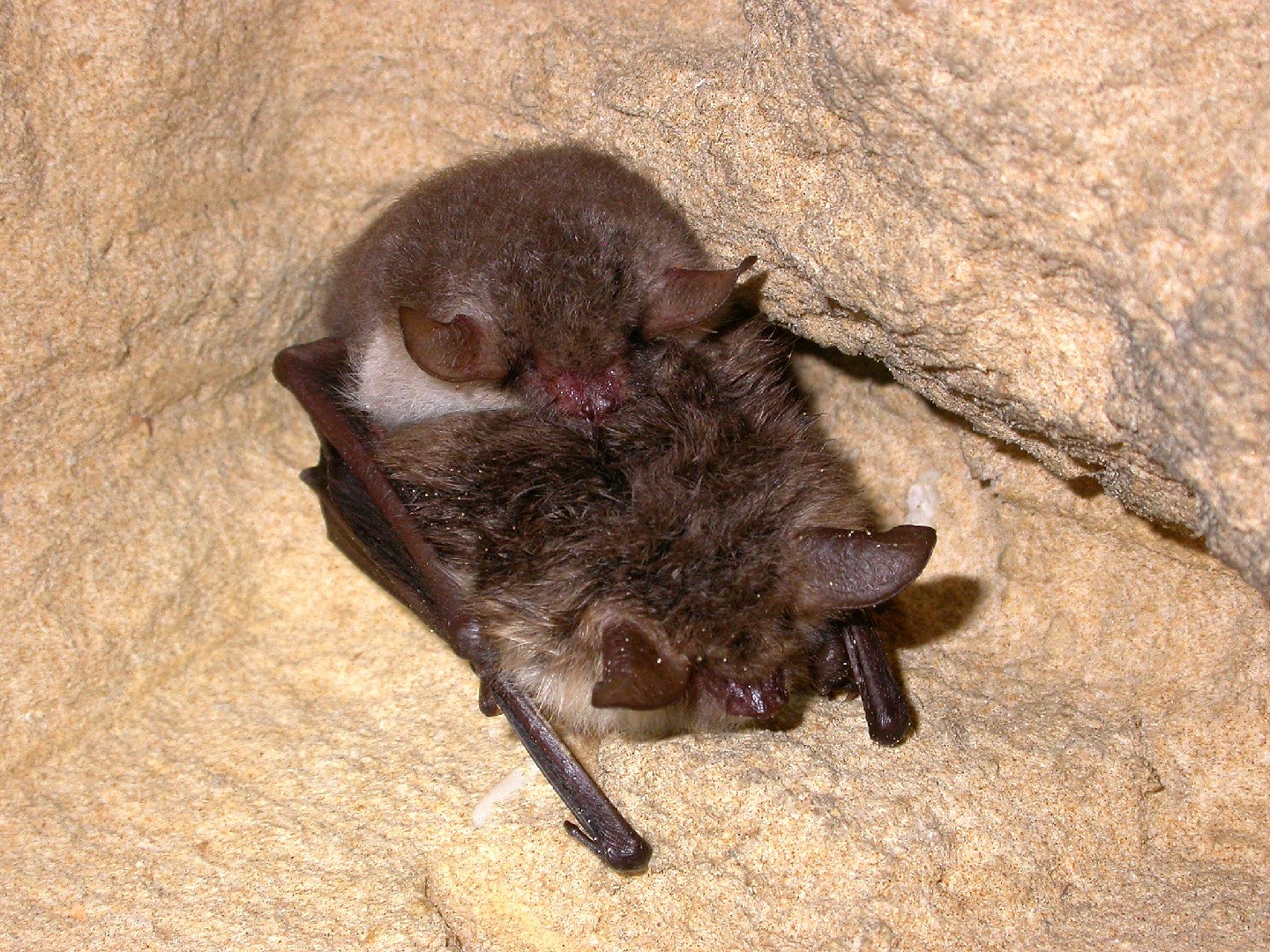Natterer's bat
A species of Mouse-eared bats Scientific name : Myotis nattereri Genus : Mouse-eared bats
Natterer's bat, A species of Mouse-eared bats
Scientific name: Myotis nattereri
Genus: Mouse-eared bats
Content
Description General Info
 Photo By Gilles San Martin , used under CC-BY-SA-2.0 /Cropped and compressed from original
Photo By Gilles San Martin , used under CC-BY-SA-2.0 /Cropped and compressed from original Description
The natterer's bat is a common, medium-sized bat found in hollowed-out trees in forests close to water; they may also be found in the roofs and attics of homes in developed areas. These bats are slow-fliers and usually stay close to vegetation where they feed on various insects. Though wild populations are stable, habitat fragmentation and pesticides may threaten the species.
General Info
Lifespan
15-25 years
Diet
Natterer's bat's diet primarily consists of small invertebrates, particularly spiders. It uses a unique 'gleaning' hunting technique to pluck prey off surfaces, distinguishing it from other bat species relying on aeroecology.
Appearance
Natterer's bat is a small bat species with a slender body and a fur-covered tail. Its fur is typically dark brown or grayish-brown on the back, while its underparts are whitish or pale gray. The head is characterized by a distinctive white or yellowish 'nose mask'. The sexes are similar but females are slightly larger. No remarkable differences occur due to age or between subspecies.
Behavior
Natterer's bat is nocturnal and insectivorous. It emerges at dusk to hunt for insects and uses echolocation to find prey and orient itself at night. Like many other species of bat, it emits sounds at too high a frequency for most humans to detect and then interprets the echoes created in order to build a "sound picture" of its surroundings. The frequencies used by this bat species for echolocation lie between 23–115 kHz and have most energy at 53 kHz. The individual signals have an average duration of 3.8 ms. The wide bandwidth of its frequency-modulated search signals enables it to detect prey only a few centimetres from vegetation and it does not use vision, olfaction or sounds emitted by its prey for this purpose. The bat feeds on the wing and it mostly catches insects in flight but it is also able to feed on prey items such as spiders and caterpillars dangling close to foliage on silken threads. During a study of the bat's diet, examination of droppings showed that it can also gather prey items from the ground. The diet was found mostly to consist of large Diptera (flies) but Trichoptera (caddisfly), Hymenoptera (bees, wasps, ants and hoverflies) and Arachnida (spiders and harvestmen) were also commonly eaten. The remains of other prey items occasionally found in the droppings included Lepidoptera (moths), Coleoptera (beetles), Hemiptera (bugs), Dermaptera (earwigs) and Chilopoda (centipedes). This bat may use its interfemoral membrane to catch prey and the fringing hairs may have a sensory function. It has been shown that it can land on the ground to pick up and pursue invertebrates that are active at night, and continues to emit search signals in order to locate them precisely. Breeding takes place in the spring and many Natterer's bats may congregate in a nursery roost. After fertilisation, a female normally gives birth to a single offspring after a gestation period of fifty to sixty days, but twins sometimes occur. Weaning takes place six or seven weeks later and the juvenile becomes sexually mature the following year. 
Population
Stable
Scientific Classification
Phylum
Chordates Class
Mammals Order
Bats Family
Evening birds Genus
Mouse-eared bats Species
Natterer's bat